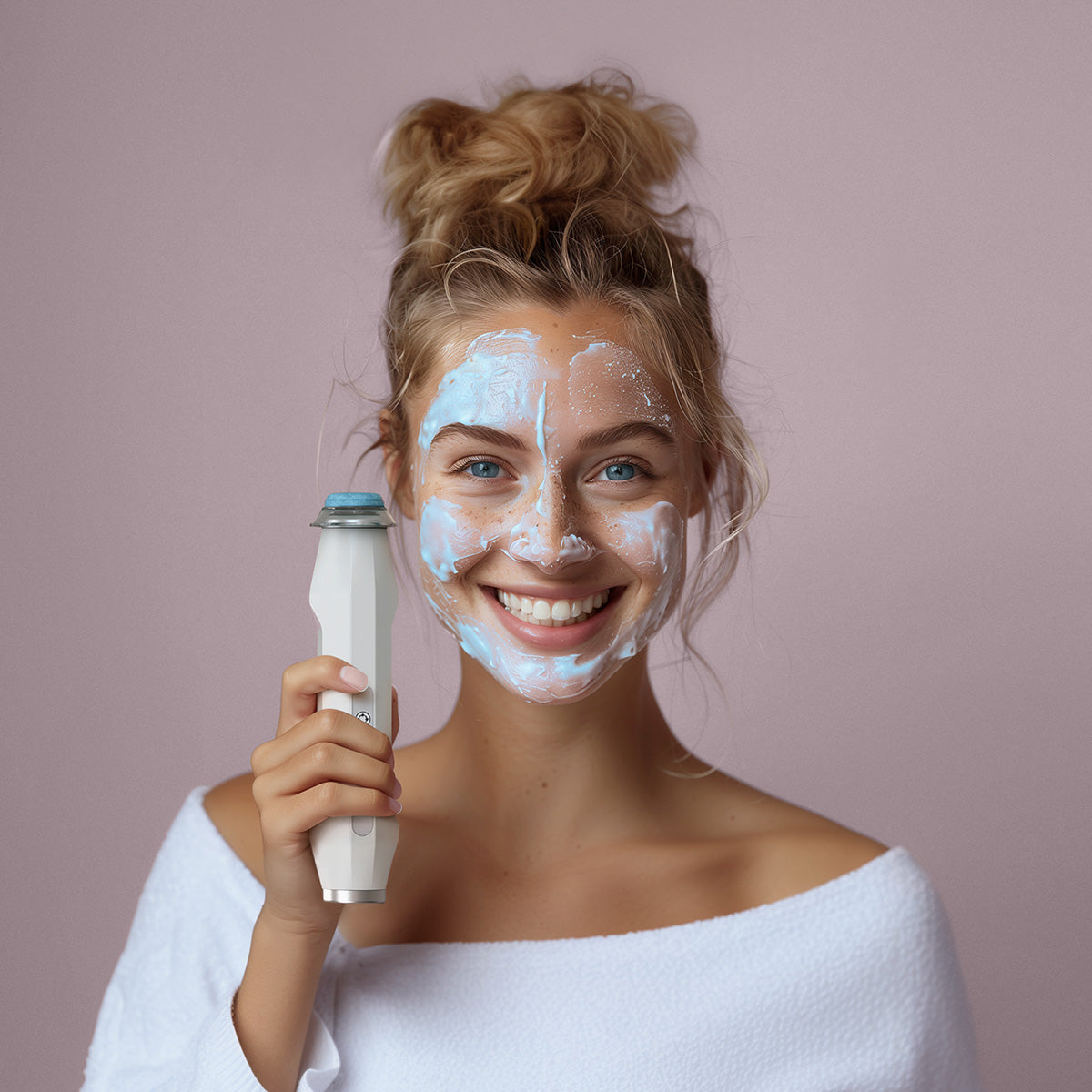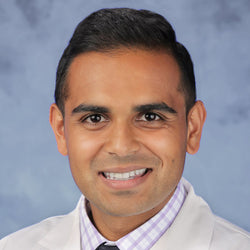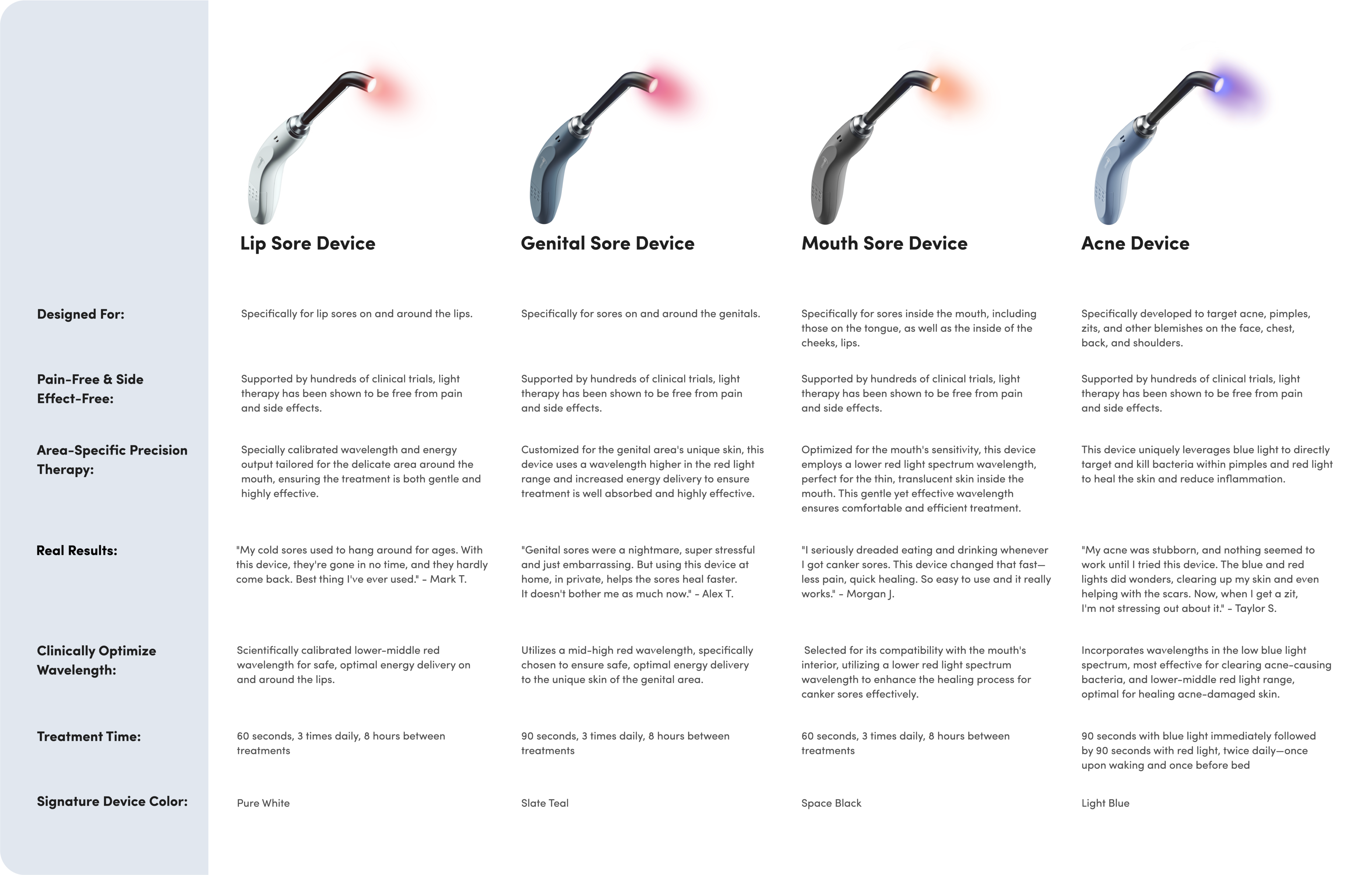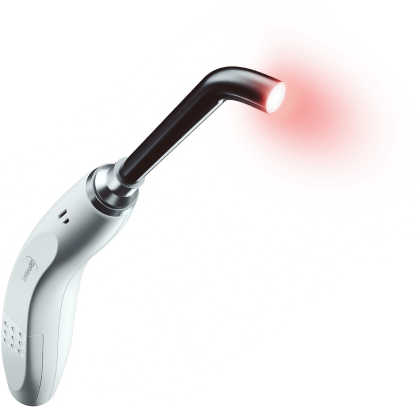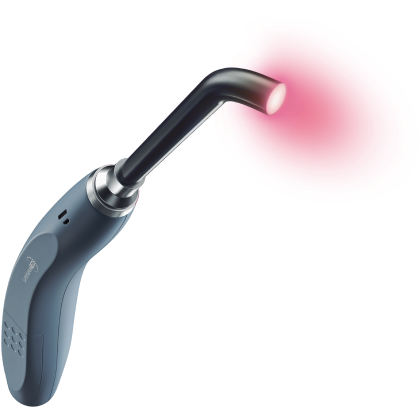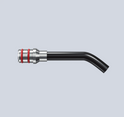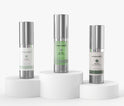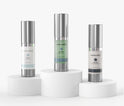Canker Sores vs Cold Sores: Understanding the Difference

Canker Sore Example (left); Cold Sore Example (Right)
The WHO estimates that almost 4 billion people ages 0 to 49 are living with HSV-1, the virus primarily responsible for cold sores. Millions of individuals also struggle with canker sores, also known as aphthous ulcers, which are painful ulcers that form inside the mouth. As both canker sores and cold sores occur near the lips, cause discomfort during daily activities, and experience similar healing times (an average of 7 to 10 days), it's easy to mix up these conditions.
The Difference Between Canker Sores vs. Cold Sores
Cold sores are caused by the herpes simplex virus. They classically develop as clusters of tiny, pus-filled bumps on the lips and around the mouth that last up to 10 days. Cold sores are more likely to be caused by HSV-1 than HSV-2, but both strains can appear anywhere on the body. Minor cold sore outbreaks can be mistaken for irritated skin or a pimple, and many people with cold sores never show symptoms after the first outbreak.
Canker sores are non-viral ulcers that form on the inside of the lips and cheeks. Unlike cold sores, canker sores resemble pink craters with a soft white border. Canker sores can be minor, occurring a few times per year and lasting around one week. For some, canker sores cause debilitating pain and last two weeks. Major lesions may cause scarring and make it challenging to eat and drink.
Canker Sores vs. Cold Sores: Which is Contagious?
It can be difficult to tell the differences between cold sores or canker sores if you are unfamiliar with these conditions. Many people fear that kissing or sharing cups and utensils with someone who has a sore inside their mouth means they will also get sores. The rule of thumb: if a sore has an ulcer-like appearance and occurs inside the lip or mouth, it is likely a canker sore and is not contagious.
HSV-1 and HSV-2 are highly contagious viruses that can be passed to anyone, including infants. Cold sores typically appear on the lips, but they can also be present around the mouth and cause itchiness, throbbing, tingling, and burning. HSV-1 is spread through close contact, such as kissing or touching infected or disrupted skin, as well as sharing items like used towels with someone experiencing an outbreak. In some cases, the herpes simplex virus can spread even if there are no signs of sores.
When working out the symptoms of canker sores vs cold sores, look at the big picture: Were you recently exposed to someone experiencing a cold sore outbreak? Did you start seeing someone new within the last few weeks? Do you have a family history of canker sores?
How to Treat Cold Sores vs. Canker Sores
Treatment for canker sores vs cold sores is marked by different diagnostic methods, topical creams, and unique approaches to resistant lesions.
Cold sores are diagnosed with a culture or blood test. Both forms of the herpes simplex virus remain in the body for life and recur periodically. By the time HSV-1 or HSV-2 has spread along the nerve pathways, a cold sore will eventually form. This is called the prodrome stage, and most cold sore sufferers experience it as a tingly, burning sensation. The good news is that cold sore outbreaks tend to decrease in severity with age. Some cold sore treatment options include:
- Taking an oral antiviral prescription. FDA-approved prescriptions for treating cold sores may reduce healing time by two days. One well-known medication for HSV-1, Valtrex, can cause side effects including lack of appetite, tiredness, and difficulty concentrating (Reference). Moreover, oral antiviral treatments are only effective when taken before vesicles appear.
- Applying an antiviral cream. Antiviral creams are also more effective when applied during the prodrome stage. These can sometimes soothe itchiness and pain during a cold sore outbreak.
Unlike cold sores, canker sores are not diagnosed through testing. Treatment depends on the size and severity of the lesions. If your canker sores are mild, your doctor will likely prescribe one of the following:
- Carafate, a coating agent that protects canker sores from acidic foods and teeth brushing.
- Hydrogen Peroxide rinses, which targets bacteria that may worsen the sores.
- Fluocinonide, a topical corticosteroid cream to reduce inflammation.
In more extreme cases, you may need to undergo cauterization at a doctor’s office. The cauterization process uses Debacterol, a topical solution, or silver nitrate. While these techniques may relieve pain, they do not speed up the healing process.
Canker sores have a highly probable genetic link and often appear in childhood. If your family members suffer from mouth lesions, an easy way to determine if you are genetically prone to is to test for common allergens. Try switching to an all-natural toothpaste made with activated charcoal, an anti-bacterial superstar, and rinse with salt water. If you and your family members still develop canker sores after changing your oral hygiene regimen, you may want to consider the Autoimunne Protocol diet. Food intolerances that trigger canker sores are also heritable. Eliminating common trigger foods does not guarantee you will be cured of canker sores, but it may prevent major lesions and inner lip scars.
Prevention for Canker Sores and Cold Sores
Struggling with cold sores or canker sores points to an imbalanced immune system. Proper rest, staying hydrated, decompressing with exercise, and eating a balanced diet may reduce the likelihood of developing these conditions. However, there are a few key differences between preventing canker sores vs. cold sores.
If you have canker sores, the discomfort of the sores may interfere with sleep, eating, oral hygiene, and speaking. You're probably wondering how you can avoid ever developing these lesions again. Unfortunately, preventing canker sores is difficult because they have no definitive cause. Lesions are often triggered by:
- Allergy to Sodium Lauryl Sulfate in toothpaste
- Ongoing stress from lack of sleep, surgery, or illness
- Mechanical trauma from a dental instrument or braces
- Nutritional deficiencies such as low B12, iron, or folic acid (common in vegetarians and vegans)
- Underlying immune system conditions such as Lupus, HIV/AIDS, and Behcet's disease
- Helicobacter pylori (H. pylori), a bacterial infection in the stomach lining
- A sensitivity to low alkaline and acidic foods, such as coffee, chocolate, and tomatoes
What is the number one way to prevent a cold sore outbreak? Avoid common triggers (if possible). Experts believe that the common cold, sunlight, surgery, and hormonal fluctuations can cause a cold sore outbreak. Leading a hectic lifestyle also gives HSV-1 and HSV-2 a window to reactivate.
Heal Cold Sores or Canker Sores Using Red Light Therapy
Whether you struggle with canker sores, cold sores, or both conditions, you may feel frustrated with the unpredictability of your treatment regimen. Antiviral medications may not always prevent an outbreak. Canker sores can cause weeks of discomfort during and after the healing process, and rinses and topical creams are hit or miss. The Luminance RED is an FDA-approved alternative to traditional therapies used for canker sores and cold sores. By holding the soothing red light to the lesion (or where you suspect it may form), your skin receives a burst of powerful energy that can speed up healing times up by 49% and stops future outbreaks from forming. To learn more about this new treatment, click here.



